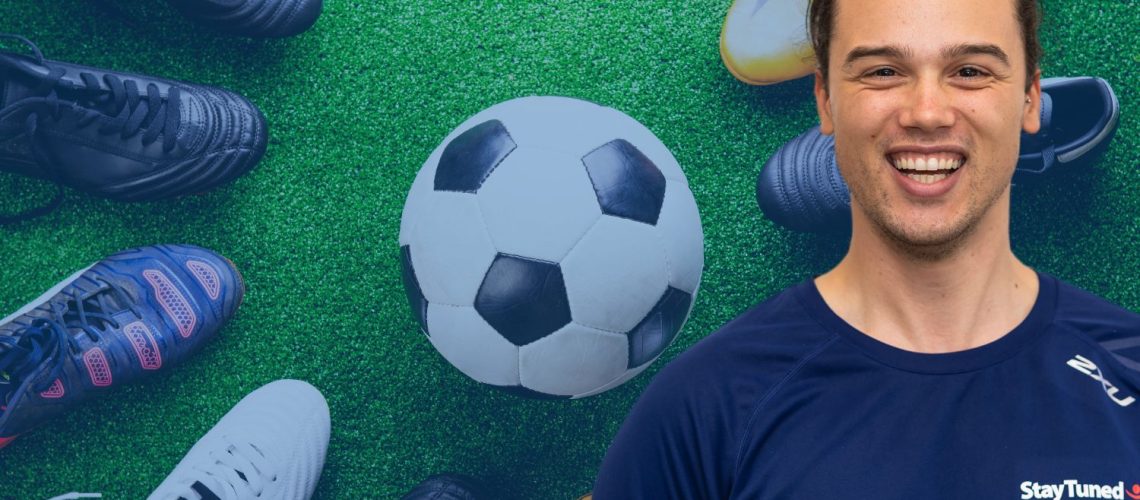As an osteopath, I’ve seen my fair share of soccer injuries, from sprained ankles to pulled muscles and everything in between. Soccer is a demanding sport that requires agility, strength, and endurance but comes with risks. However, with the proper preventative measures and management strategies, players can stay on the field and avoid spending more time on the sidelines.
Warm Up & Cool Down
Prevention is key to avoiding soccer injuries. A crucial part of this is a proper warm-up and stretching routine. Before stepping onto the field, players should engage in dynamic stretching exercises. This increases blood flow to the muscles and enhances flexibility, reducing the risk of strains and sprains during gameplay.
A cool-down should focus on specific muscles and joints, incorporating more static stretching. Additionally, it is crucial to ensure players wear the appropriate gear. This includes properly fitted football shoes for stability and support and shin guards to protect against impact injuries.
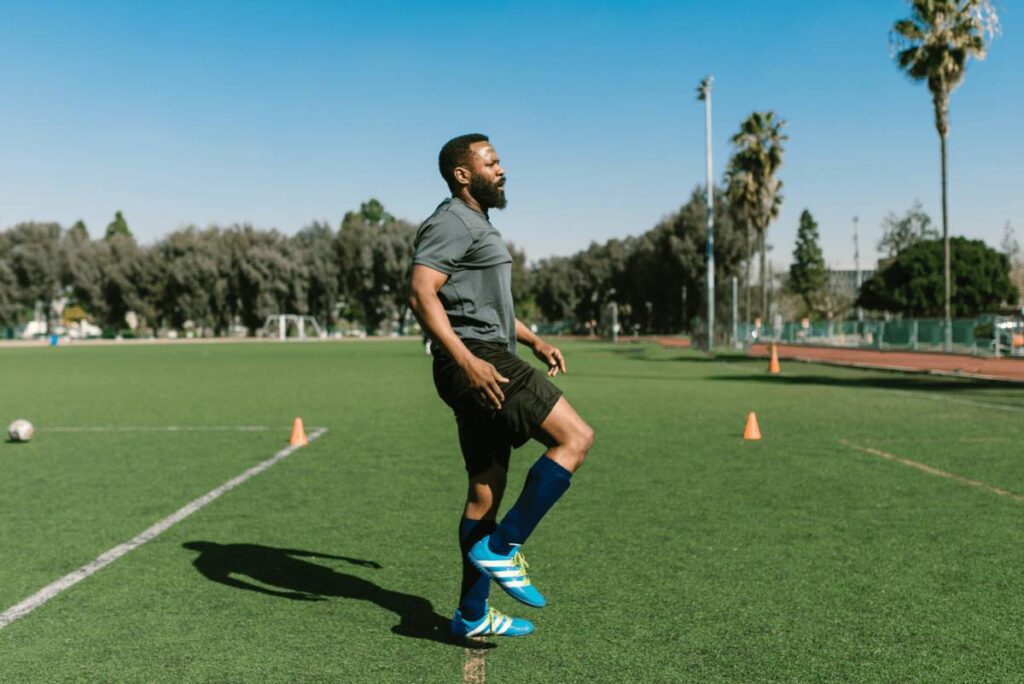
Working with Local Clubs and Coaches
Proper technique is another essential aspect of injury prevention in soccer. At Stay Tuned, we work closely with local sporting clubs and coaches to emphasise the importance of correct form when kicking, passing, and tackling to minimise the risk of injuries and strain caused by overuse. Teaching players how to fall safely and protect themselves during collisions can also help prevent more serious injuries such as concussions.
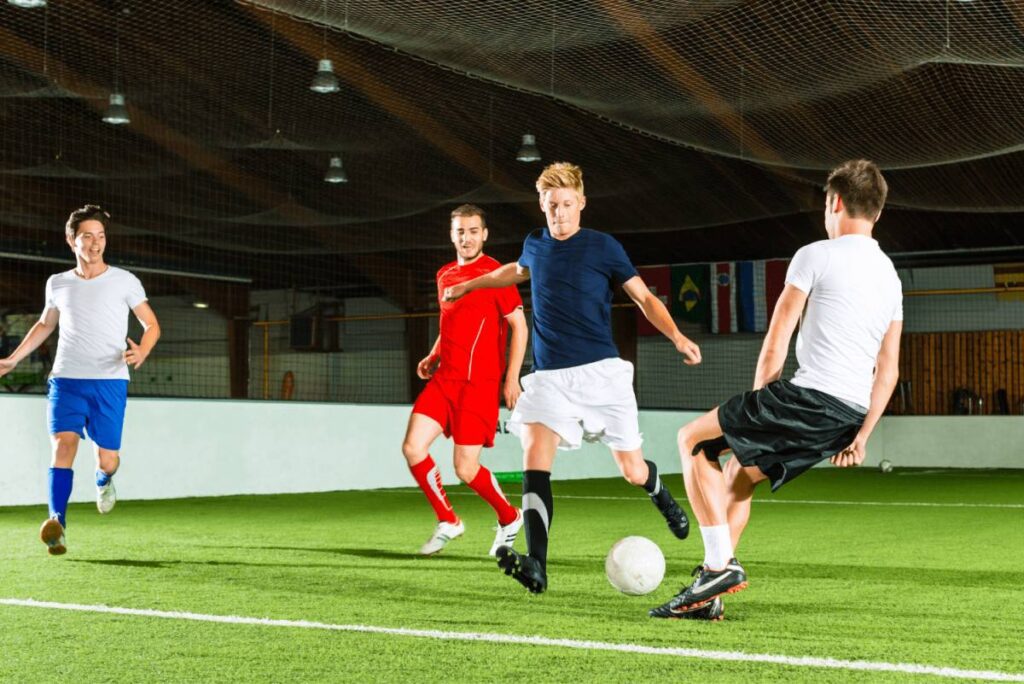
An Osteopaths Role In Soccer
Despite our best efforts, injuries can still occur on the soccer field. When they do, prompt treatment is crucial for a speedy recovery and to prevent further complications. As an osteopath, I employ various management strategies to help alleviate pain and promote healing in injured players. These strategies include lifestyle advice, rehab programs, education, and manual therapy.
For muscle strains and ligament sprains, I may use manual therapy techniques such as soft tissue massage and joint mobilisation to reduce pain and inflammation and improve range of motion.
For more severe injuries, such as fractures or ligament tears, I work collaboratively with other healthcare professionals to ensure each player receives appropriate care. This may involve referring them to a specialist for additional assessments or treatment.
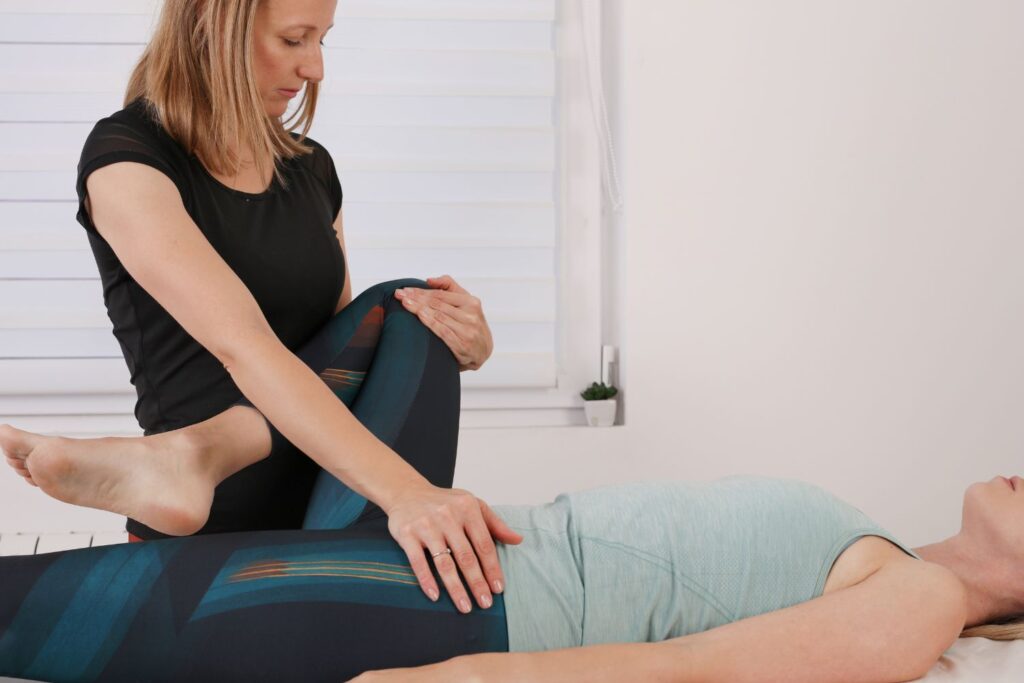
Rehabilitation is a crucial aspect of the recovery process for soccer injuries. I work with players to develop personalised rehabilitation programs tailored to their needs and goals. This may include strengthening exercises, flexibility training, and sport-specific drills to help players regain strength, mobility, and confidence on the field.
The Importance of Rest and Recovery
In addition to physical rehabilitation, I also emphasise the importance of rest and recovery in healing. Giving the body time to heal properly prevents reinjury and ensures players can return to play at their full potential.
Ultimately, preventing and treating soccer injuries requires a multi-faceted approach that addresses the game’s physical and mental aspects. By focusing on proper warm-up, technique, and rehabilitation, players can reduce their risk of injury and stay in the game. As an osteopath, I’m dedicated to helping soccer players of all ages and skill levels stay healthy, active, and injury-free on the field.
Dr. Gabriel Pitrone
Osteopath and Group Exercise Rehab Instructor at Stay Tuned Sports Medicine
B.Sc.(Cli.Sc.), M.H.Sc.(Osteo)
Want to learn more? Our practitioners are here to help; click here to make a booking.
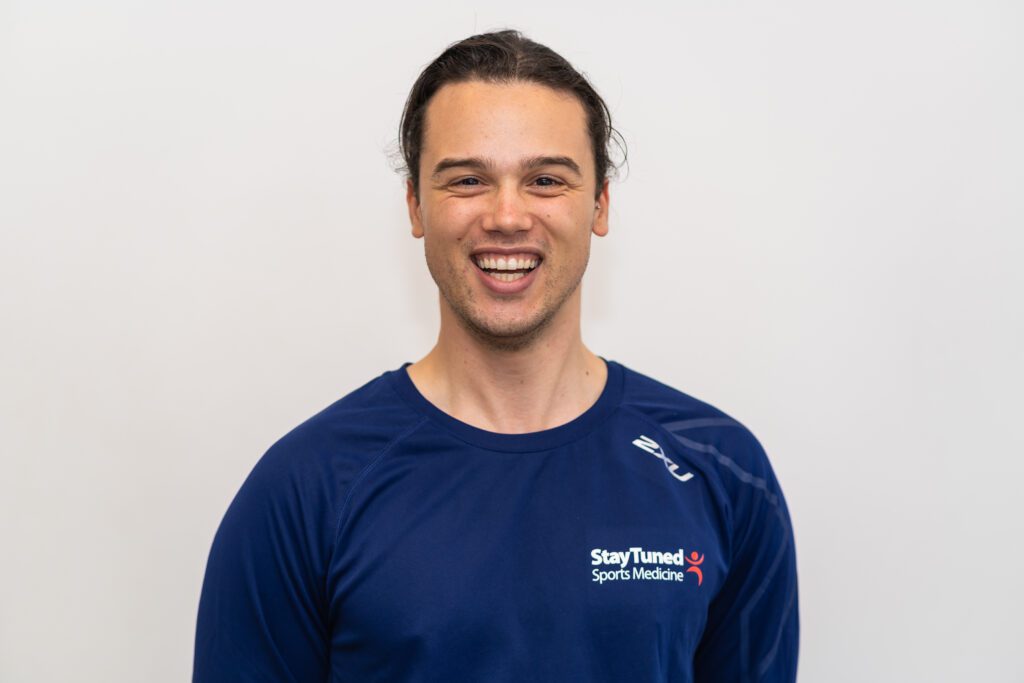
References
American Academy of Orthopaedic Surgeons. (n.d.). Soccer Injury Prevention. Retrieved from https://orthoinfo.aaos.org/en/staying-healthy/soccer-injury-prevention
University of Rochester Medical Center. (2022). Soccer Safety. Retrieved from https://www.urmc.rochester.edu/encyclopedia/content.aspx?ContentID=7&ContentTypeID=90
American Academy of Pediatrics. (2018). Preventing Soccer Injuries. Retrieved from https://www.healthychildren.org/English/healthy-living/sports/Pages/Preventing-Soccer-Injuries.aspx
Canadian Academy of Sport and Exercise Medicine. (2015). Osteopathy: An Overview. Retrieved from https://casem-acmse.org/wp-content/uploads/2015/09/CPG_2015_Osteopathy.pdf
Sports Medicine Australia. (2019). Hamstring Strain – Treatment and Exercises. Retrieved from https://sma.org.au/resources-advice/injury-fact-sheets/hamstring-strain-treatment-exercises
American Orthopaedic Society for Sports Medicine. (n.d.). Ligament Tears. Retrieved from https://www.sportsmed.org/aossmimis/members/downloads/patient_resources/Ligament_Tears.pdf
National Institutes of Health. (2020). Rehabilitation for Sports and Exercise Injuries. Retrieved from https://www.niams.nih.gov/health-topics/sports-injuries/rehabilitation
Harvard Health Publishing. (2019). The Importance of Rest and Recovery for Athletes. Retrieved from https://www.health.harvard.edu/blog/the-importance-of-rest-and-recovery-for-athletes-2019052216911

